Travel to Longyearbyen, Svalbard, Norway
Jun 21
Travel through Oslo, Norway on your way to Longyearbyen, Svalbard, Norway.
Join Our Waitlist Today!
Be the first to know if spots become available for this sold-out trip. By signing up, you’ll also receive notifications about our next exciting adventure to this destination when it’s organized and posted on our website. Secure your place in line for the adventure of a lifetime with Cheesemans’ Ecology Safaris!
Sail past glaciers through Norway’s Arctic lit by the midnight sun to find a most mythic predator: the polar bear. This polar adventure is to the famed Svalbard Archipelago of northern Norway. Located between the North Pole and Norway, these islands are home to one of Earth’s greatest concentrations of polar bears. This region remains wild and pristine with its vast mountains, dramatic fjords, massive glaciers, and picturesque icebergs coupled with iconic Arctic wildlife. The primary mission of expedition leader and professional photographer Scott Davis is to share with you the raw beauty of the high arctic world and the unique wildlife that inhabits this region, and for those interested also provide you with skills and opportunities to produce quality images of unique Arctic wildlife and beautiful landscapes.
⭐⭐⭐⭐⭐ “The trip was very well managed from start to finish. Accommodations and food were good. The boat was very comfortable. The guides were highly skilled, warm, and always open to helping with photography. The crew was great. The wildlife experiences were what I had hoped for and the scenery was more striking than I had expected. I came away learning new things, making some new friends, and looking forward to future adventures with Cheesemans’.” – Jennifer Black |
Itinerary Updated: January 2025
| Date | Description | Lodge | Meals |
|---|---|---|---|
| Jun 21 | Travel to Norway. | ||
| Jun 22 | Arrive in Longyearbyen, Svalbard, Norway. | Radisson Blu Polar Hotel Spitsbergen, Longyearbyen | |
| Jun 23 | Embark on our ship in Longyearbyen. | Aboard our ship | B, D |
| Jun 24-Jul 2 | Voyage throughout the Svalbard Archipelago with Zodiac cruises and landings for unbelievable Arctic photography. | Aboard our ship | B, L, D |
| Jul 3 | Disembark in Longyearbyen for flights homeward. | B | |
| Jul 4 | Arrive home. |
Scott, co-owner and co-CEO of Cheesemans’ Ecology Safaris, is an expert wildlife, nature, and travel photographer. Trained as a wildlife and marine biologist, he's explored all seven continents for research and photography. National Geographic, BBC, Animal Planet, NY Times, and other prestigious publications have featured his inspiring work. Scott's passion for teaching and talent for capturing the essence of his subjects make him a highly sought-after tour leader.
Travel through Oslo, Norway on your way to Longyearbyen, Svalbard, Norway.

Arrive in Longyearbyen, Svalbard, Norway, for an overnight stay before boarding the ship the next day.
Longyearbyen is a Scandinavian town located on the island of Spitsbergen, the largest in the Svalbard Archipelago. Three other small settlements on Spitsbergen include another 1,000 people with most in the Russian settlement of Barentsburg. The rest of the 62,000 square kilometers of Spitsbergen, and the remainder of the archipelago, are largely pristine. While walking around Longyearbyen, you’ll be surrounded by tiny wildflowers beginning to bloom, and may encounter wildlife such as Svalbard ptarmigan and snow buntings nesting on the outskirts of town. Common eiders, parasitic jaegers (arctic skuas) and arctic terns nest along the coastal flats adjoining the town.
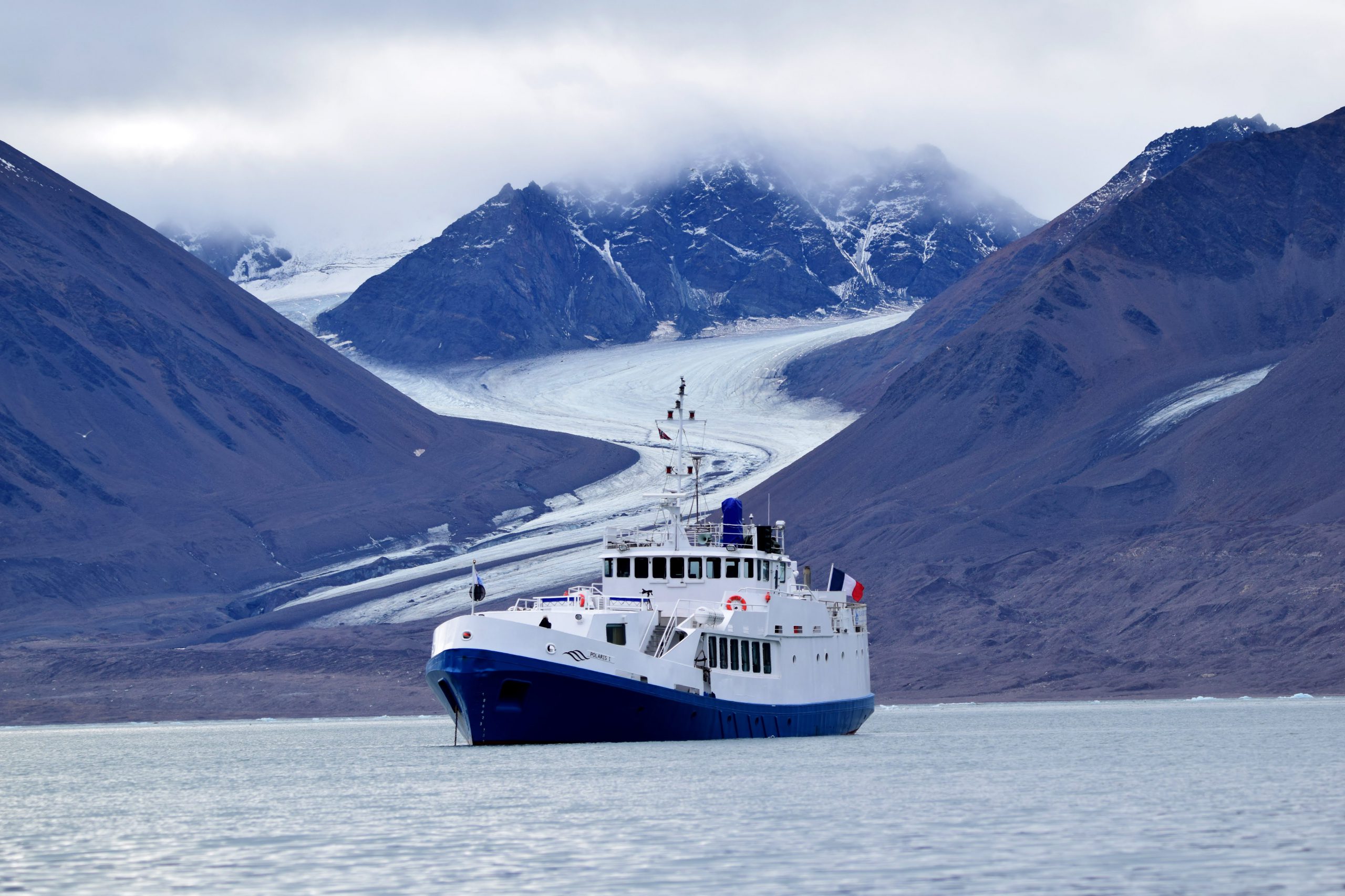
Today you can choose to do some last-minute shopping, visit the excellent museum next to the Radisson Blu Hotel, explore the shore for birds, or take a side trip to other locales along the coast of Isfjorden are available. You’ll board the ship in the late afternoon.
The waters around these islands are very calm compared to the Antarctic. Due to the shallow seas and the warming waters of the Gulf Stream, the climate is much milder than one would expect so far north. During this in-depth voyage, you will have ample opportunities to land ashore, Zodiac cruise, and view wildlife from the decks of our ship.
Flexibility is paramount in expedition travel. Our itinerary depends on the weather and ice conditions. We emphasize photography and observation of polar bears and other Arctic wildlife along with unique and beautiful landscapes, complying with local regulations regarding wildlife sightings in Svalbard. Our small group size gives us the flexibility to stay at a perfect photographic moment for however long needed according to the wildlife behavior and reactions.
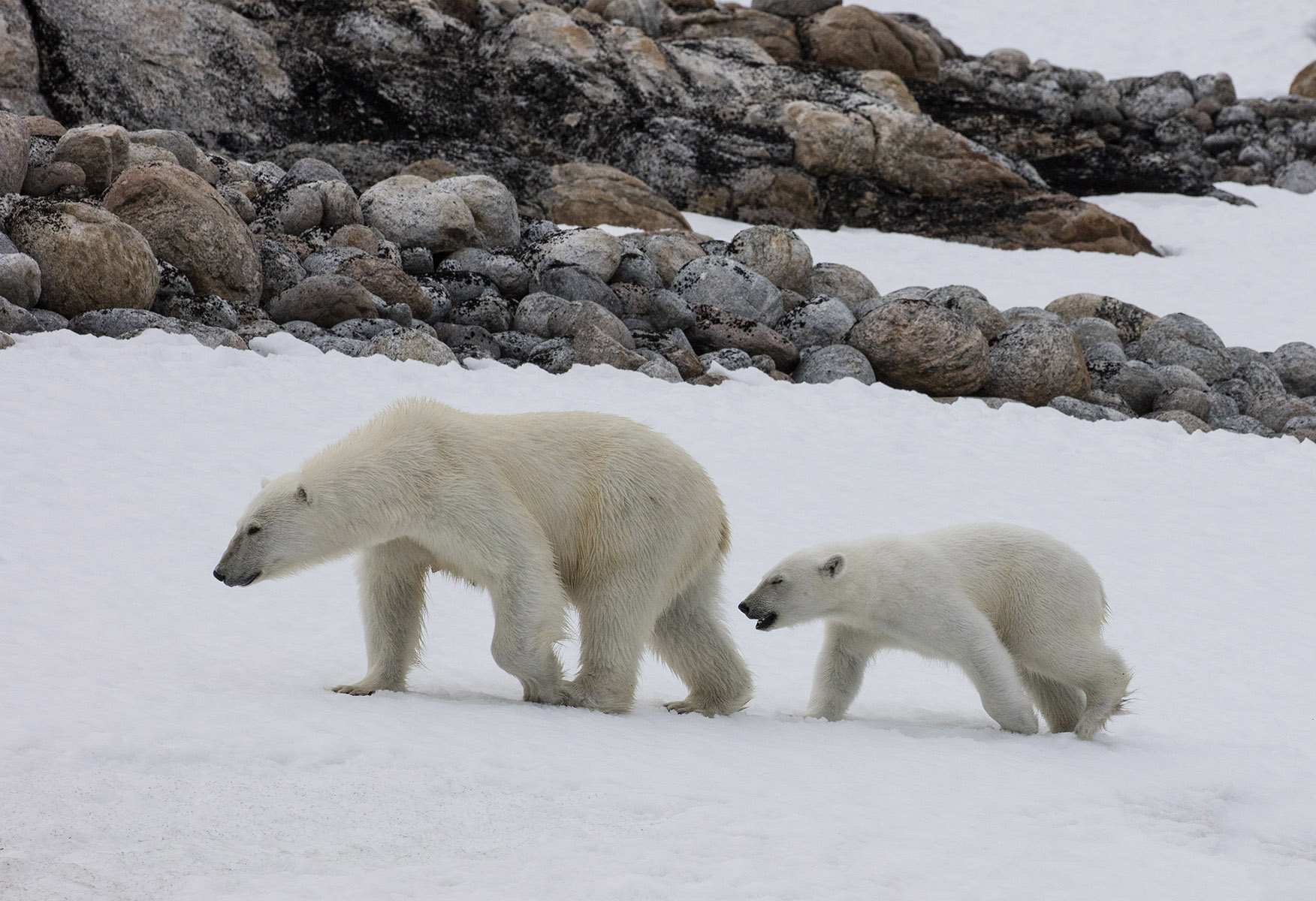
Your expedition will have an incredible amount of freedom to explore the Svalbard archipelago. In the land of 24-hr daylight, you’ll search for Arctic wildlife of all shapes and sizes. The region hosts species that will present you with great opportunities to capture world-class images. Your small group expedition allows for flexibility and freedom to cruise around the shores. When on shore, you’ll have the opportunity to hike, explore, and photograph wildlife and landscapes. You’ll also find that Svalbard is a geologist’s paradise with all the ancient colorful rock strata exposed and ready to explore.
You’ll visit fantastic bird cliffs where black-legged kittiwakes, northern fulmars, and several species of alcids breed which include dovekie, black guillemot, thick-billed murre (Brünnich's guillemot), and Atlantic puffin. Where ice abounds, you may see polar bears, seals, and ivory gulls. You’ll also have time to get inland a bit to see pink-footed and barnacle geese along with common eider, king eider, and long-tailed duck (oldsquaw).
While walking, stay alert for nesting shorebirds, such as red phalaropes, terns, and skuas. Be aware that arctic terns and parasitic jaegers (arctic skuas) are quick to dive bomb if they are disturbed. While on land, keep an eye out for arctic fox and Svalbard reindeer (an endemic subspecies with short legs) foraging during the plentiful summer months. Read more about some of our favorite landing sites below. A note about Norwegian geography terms (as seen in many of the following place names): “bukta” means bay, “sund” means sound, “sundet” or “stretet” means channel or strait, “øy” or “øya” means island, “landet” means land or country, “breen” means glacier, and, of course, “fjord” or “fjorden” means fjord or inlet.
Liefdefjorden The end of this fjord encompasses the broad, impressive glacier front of Monacobreen. Polar bears regularly visit this fjord, searching for seals, birds, and eggs to eat. At this time of year, many geese feed on the lush tundra, and keep an eye out for the rare king eider. The surrounding sea is a favorite feeding spot for thousands of kittiwakes.
Raudfjorden Along the north coast of Spitsbergen, Raudfjorden is a beautiful fjord with spectacular glaciers. It is home to ringed and bearded seals, seabird colonies, and surprisingly rich vegetation.
Ytre Norskøya Hike along the colorful lichen-covered cliffs on this small island on the northwest coast of Spitsbergen. There is an accessible breeding ground of seabirds here.
Krossfjorden and Kongsfjorden On the west side of Spitsbergen, Zodiac cruise along the famed Fourteenth of July Glacier (or Fjortende Julibreen, its Norwegian name) and other beautiful glacier fronts, such as Lilliehöökbreen, one of the largest, at 22km in length.
Alkhornet At the mouth of Isfjorden, the largest of all Spitsbergen’s fjords, you may land to look for arctic foxes searching the cliff base for fallen birds, and look for Svalbard reindeer grazing the luxuriant wildflower-covered vegetation, creating some of the best reindeer photography in the archipelago.
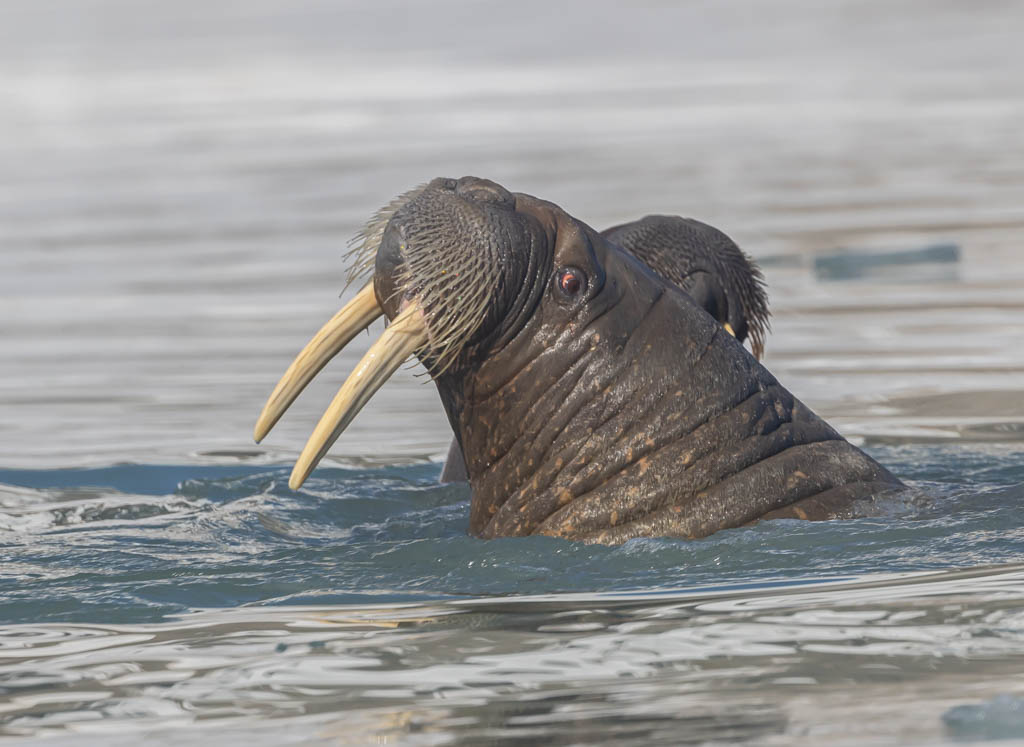
The entire group will disembark the ship in Longyearbyen around 9:00am and either transfer to the airport or, if you depart later in the day, into town.
We chose the most well-equipped and comfortable vessel in the small ship class. The ice-strengthened hull and shallow draft enables you to explore and photograph channels and inlets other ships simply cannot navigate. The ship is equipped with Zodiacs for cruising and shore excursions. Enjoy excellent wildlife and scenic viewing from a large, dual-level observation deck at the front, and large windows in the social areas. The spacious and comfortable lounge provides room to relax, gather socially, edit photos, and attend informative lectures. You have your own private cabin for lower deck cabins (or shared for main deck cabins), all with private bathroom facilities. With only twelve passengers, this ship is perfect for exploring places bigger ships cannot navigate.
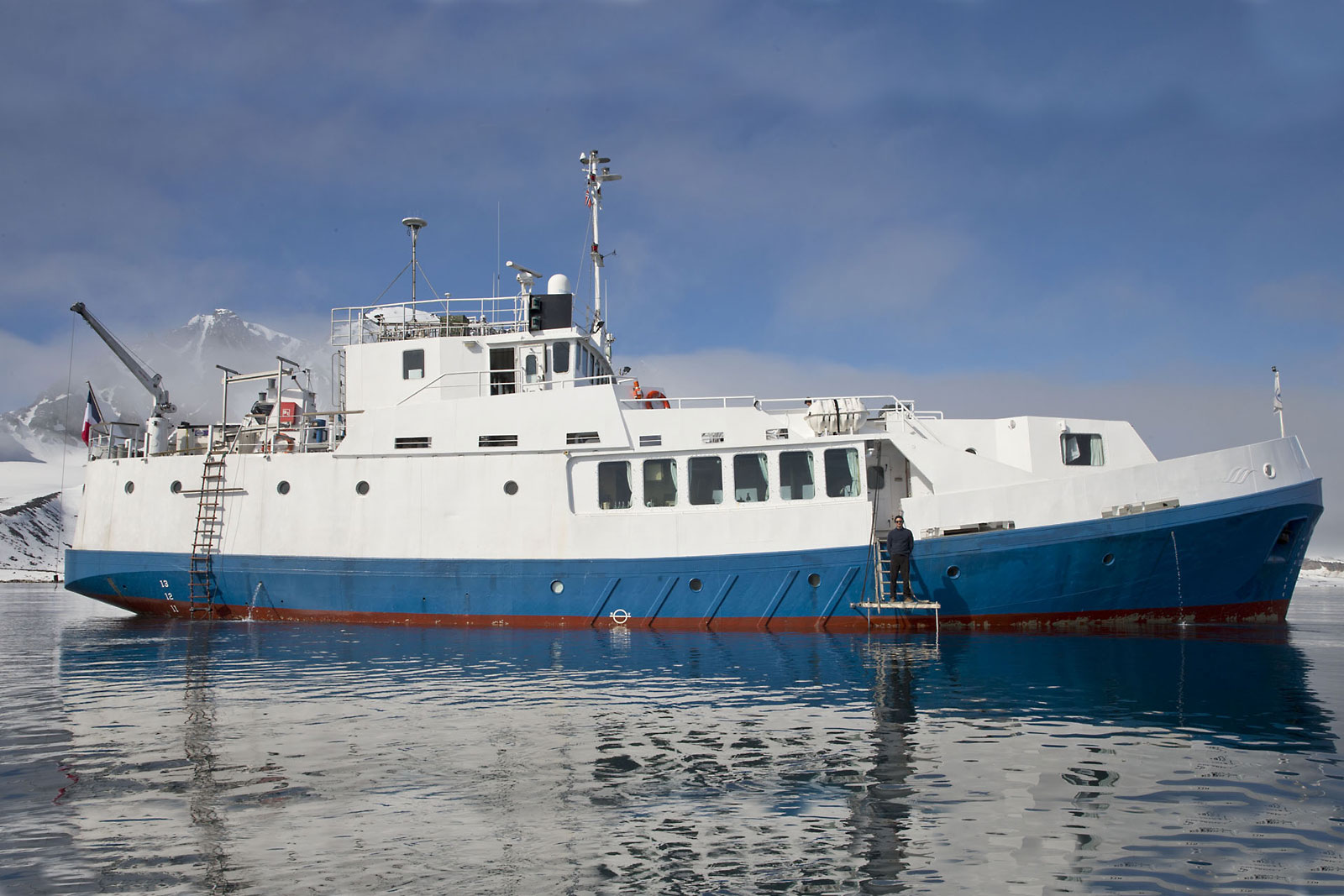
| Type | Cost Per Person |
|---|---|
| Trip Cost, single occupancy on lower deck* | $14,475 |
| Trip Cost, double occupancy on main deck | $14,475 |
| *Single occupancy aboard the ship, but double occupancy at Longyearbyen hotel. |
Costs are per person, single occupancy for lower deck cabins and double occupancy for main deck cabins, not including airfare. See Included and Not Included sections for more details.
If you are a single traveler, we will find a roommate for you at the hotel in Longyearbyen, but if we cannot find you a roommate, we may charge you a single supplement. If you prefer a single room for your night in the hotel, it costs extra and is subject to availability.
We cannot guarantee a specific cabin number, but if changes occur, we will assign a cabin of equal or greater value.
| Payment | Due Date | Amount Per Person |
|---|---|---|
| Deposit | Due now to reserve your space | $6,000 |
| Final | January 10, 2025 | Remaining Balance |
Payments are due based on the schedule above. All reservations require a deposit to confirm reservation of your space.
Refunds are given depending on the time left before departure according to the following table. The cancellation fee of $300 per person can be applied toward another trip if reserved within six months of the cancelled trip’s departure date. Cancellations are non-transferrable.
| Dates | Forfeited Amount per Person |
|---|---|
| On or before November 10, 2024 | $300 |
| November 11 to December 9, 2024 | 10% of trip cost |
| December 10, 2024 to January 9, 2025 | 40% of trip cost |
| On or after January 10, 2025 | 100% of trip cost |
You will visit the Arctic during its summer with 24 hours of daylight. Weather patterns may be highly variable, so bring appropriate attire and gear to handle a mix of conditions including wind, snow, rain, and sun. Expect temperatures in the 40s°F (4 to 8°C) during the day and in the 30s° (0 to 4°C) at night, but weather fronts can cause temperatures to either drop further or rise to the 50s and low 60s°F (10 to 17°C).
You must be able to get in and out of the Zodiacs, from the ship, via a six-foot ladder with staff assisting above and below you. Once ashore, you must be also able to get in and out of the Zodiacs onto the beach. You’ll have opportunities for a range of activities from easy, short hikes to longer, more vigorous hikes for those interested. Please contact us if you have any health concerns that may make this trip challenging.
Detailed logistical information is included in the Trip Planning Materials we will send you.
Flights you book
With only twelve passenger cabins, our ship is smaller than most ships in Svalbard, allowing you to travel farther into smaller inlets than other ships. Our small group size gives you the flexibility to seize the moment and enjoy special wildlife encounters. With two leaders and only twelve passengers, you will receive plenty of individual attention. And, with two Zodiacs, you have plenty of room for you and your photography gear.
June and July represent the peak months of the short but incredibly productive Arctic summer in Svalbard. In addition to polar bears, it is during these months we see a peak of summer animal activity including the amassing of significant bird colonies, the beginning of the short season of wildflower blooming, the potential to discover arctic fox families with their new pup additions, and ice-free access to various walrus haul out locations. It is also during the short summer that the pack ice breaks up enough to allow further exploration of the far north fjords and coastline that is otherwise inaccessible due to ice during the winter and early spring months.
Because our two expeditions visit the archipelago back-to-back, spanning four weeks, your wildlife encounters will not vary much, but the July expedition may have slightly more opportunities for wildflowers and less ice.
Don’t let a fear of motion sickness keep you away! Even those who have experienced seasickness reported that the incredible wildlife and overall experience were well worth the temporary discomfort. If you are susceptible to seasickness or are concerned that you might be, please come prepared! The key to avoiding seasickness is to act before you experience nausea. Do your own research and consult your doctor before taking any medications. A good night of sleep, eating well, limiting alcohol, and using your favorite seasickness remedy is sufficient for most travelers. Find more information on our Coping with Seasickness webpage (this information is applicable to any form of motion sickness) and contact us if you have any questions.
Our company ethos has always regarded conservation as inseparable from responsible tourism. We struggle with the dilemma that traveling worldwide expends climate-changing carbon. However, we wholeheartedly believe that traveling with us will cultivate your passion for conserving our beautiful world while stimulating each destination’s local economy. We encourage you to explore the various ways in which Cheesemans’ operates within this context:
Read our current Terms and Conditions.
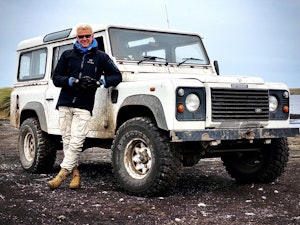 Scott Davis
Scott Davis